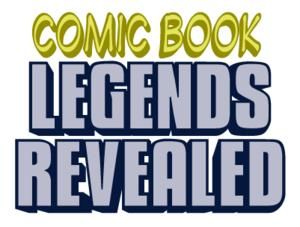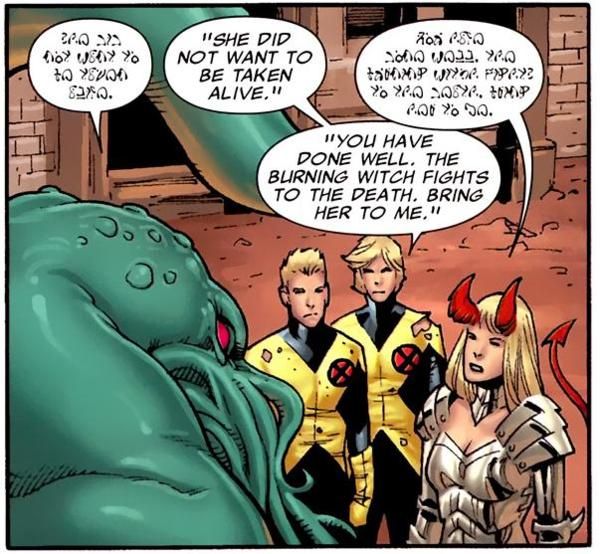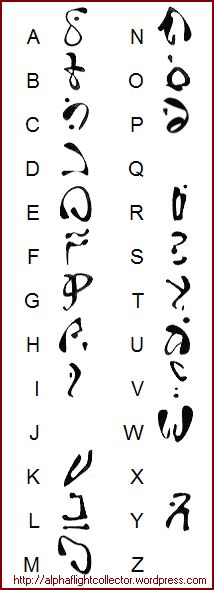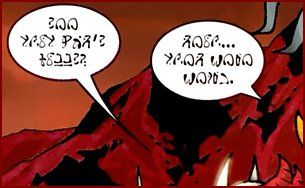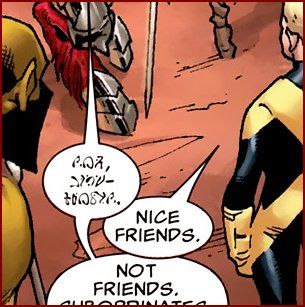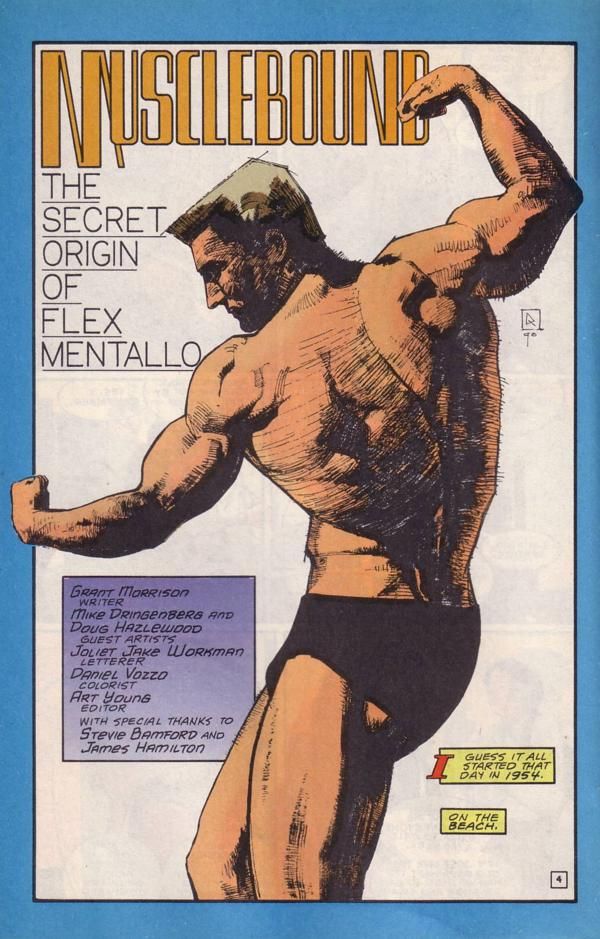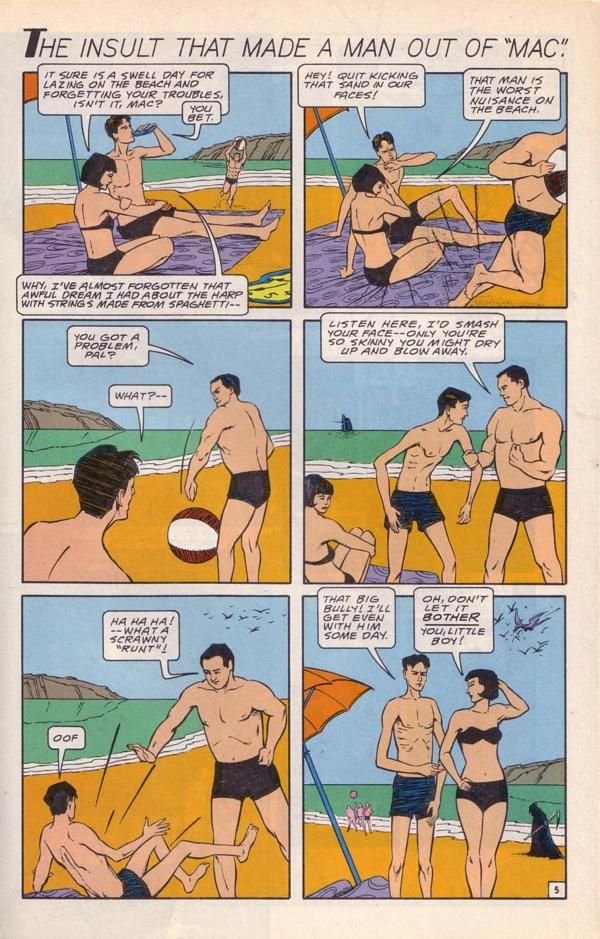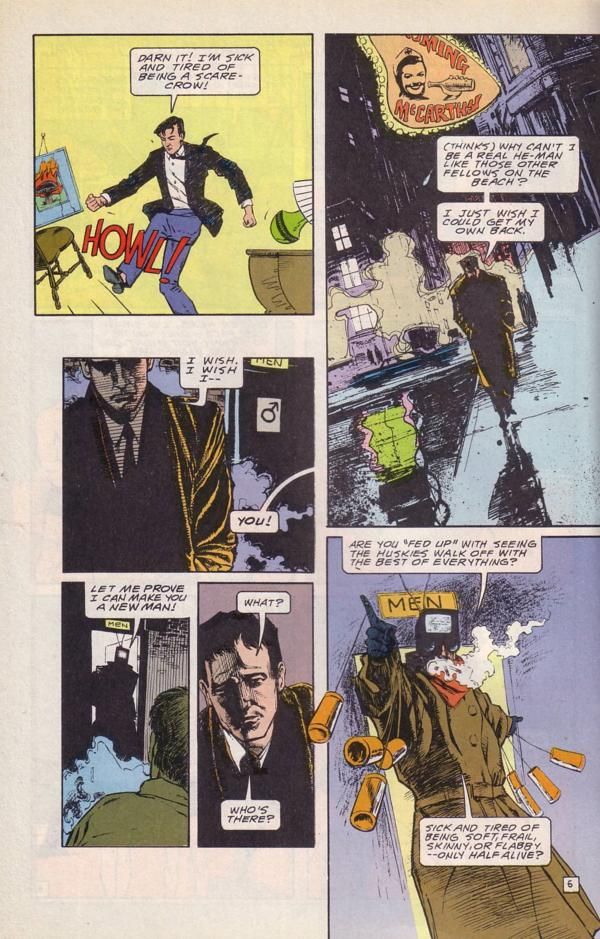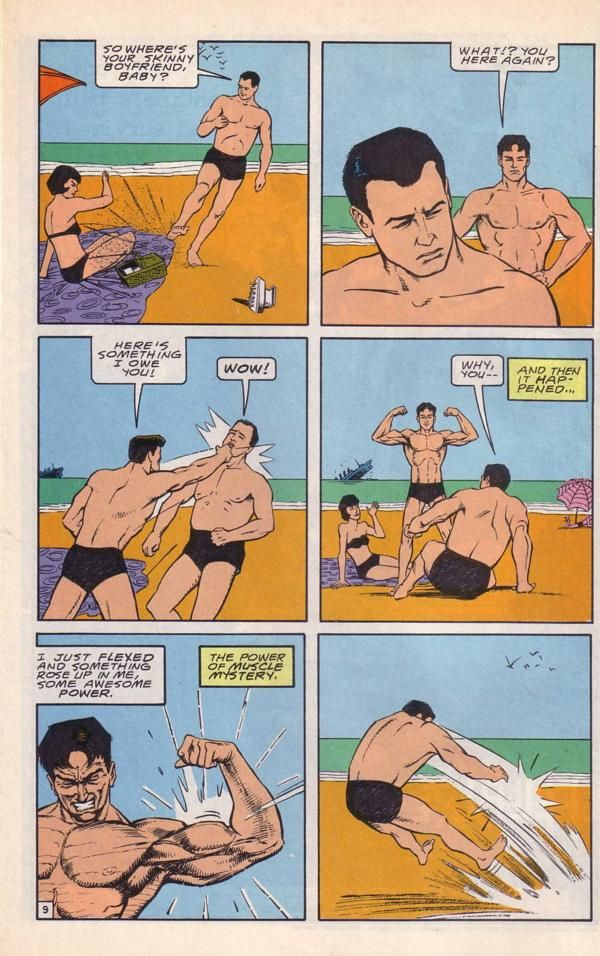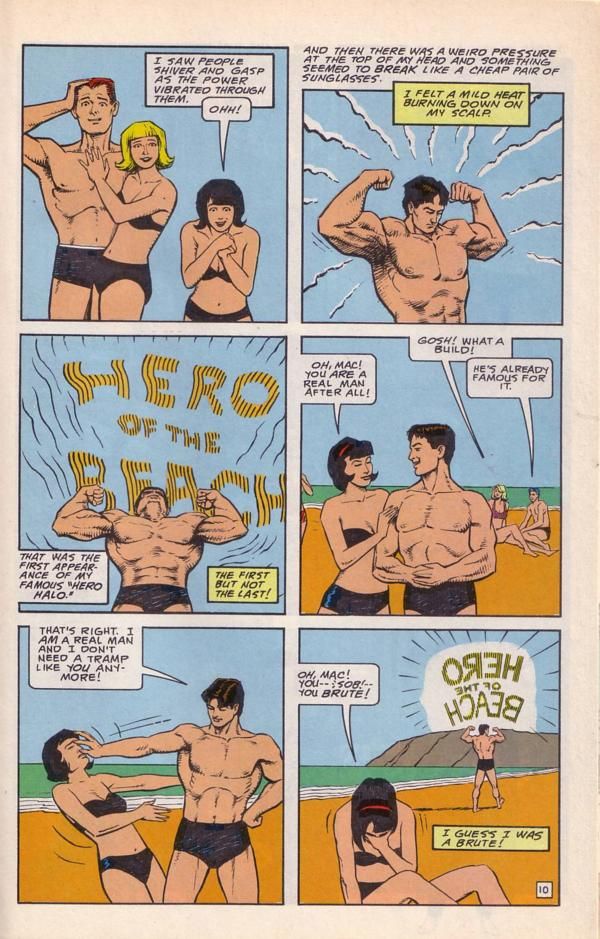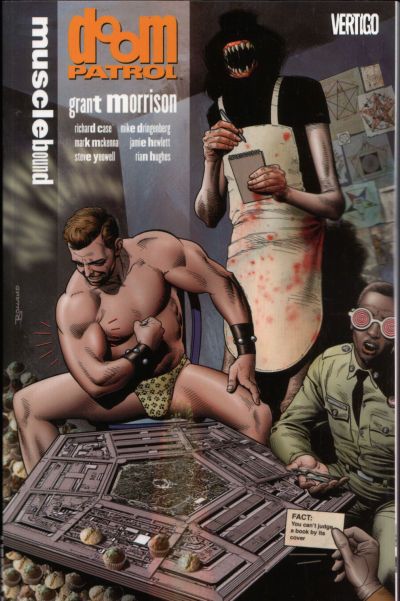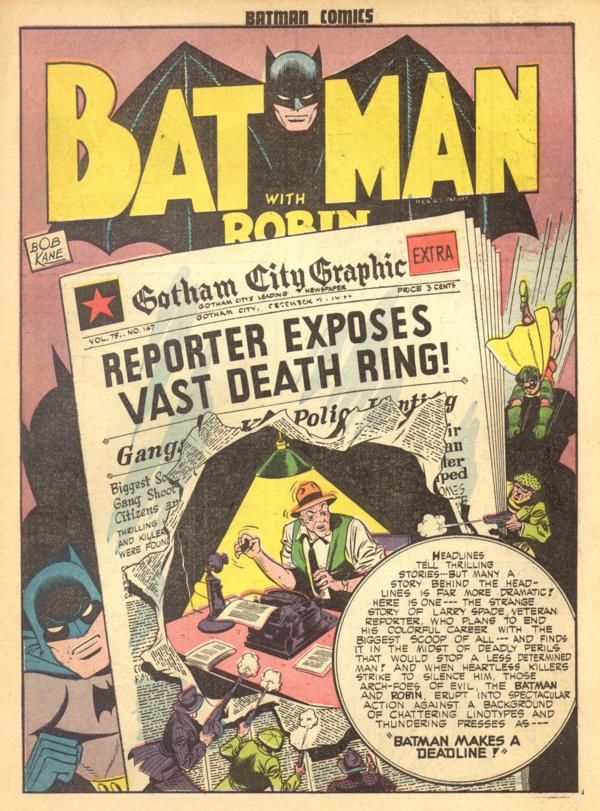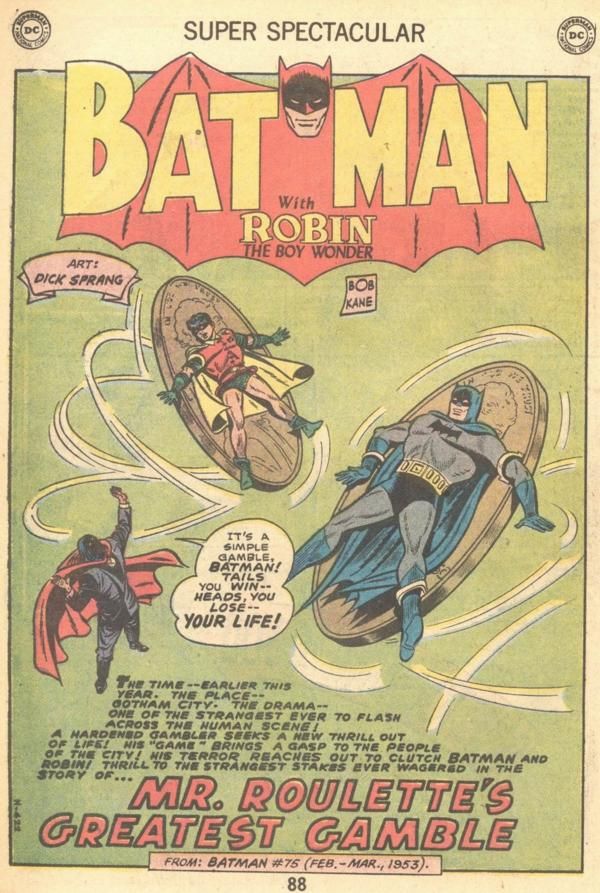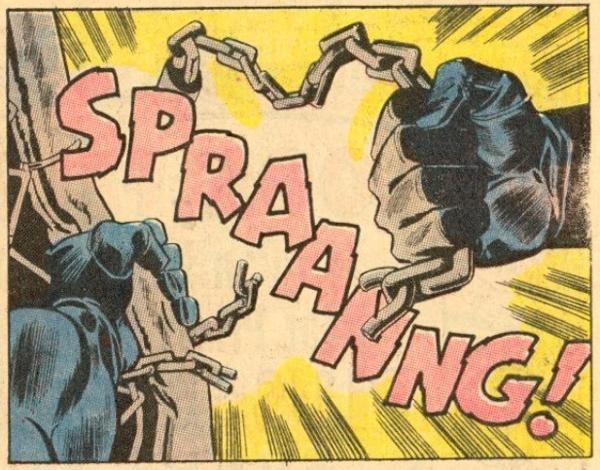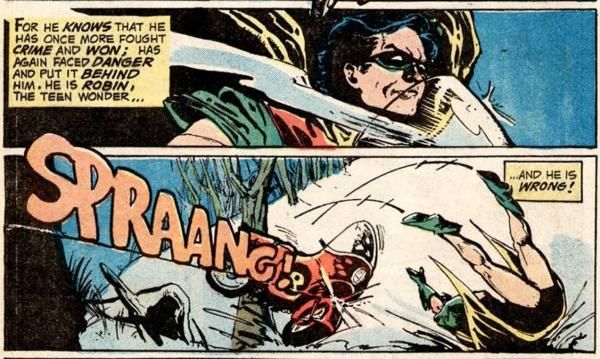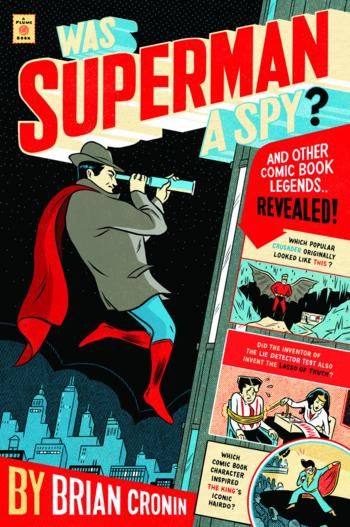Welcome to the two-hundred and eighty-fourth in a series of examinations of comic book legends and whether they are true or false. Click here for an archive of the previous two hundred and eighty-three.
Comic Book Legends Revealed is part of the larger Legends Revealed series, where I look into legends about the worlds of entertainment and sports, which you can check out here, at legendsrevealed.com. I'd especially recommend you check out this installment of Movie Legends Revealed to see if the famous story is true that John Wayne once responded to a director asking him to do a scene with more "awe" by actually adding the word into his dialogue.
Follow Comics Should Be Good on Twitter and on Facebook (also, feel free to share Comic Book Legends Revealed on our Facebook page!). As I've promised, at 2,000 Twitter followers I'll do a BONUS edition of Comic Book Legends Revealed during the week we hit 2,000. So go follow us (here's the link to our Twitter page again)! Not only will you get updates when new blog posts show up on both Twitter and Facebook, but you'll get original content from me, as well!
Let's begin!
COMIC LEGEND: A recent issue of New Mutants had some profane dialogue "hidden" in translated demon dialogue.
STATUS: True
Comic book creators have been sneaking stuff into comics to amuse themselves for decades. Whether it be putting famous characters (or real people) into the backgrounds or hiding people's names in special effects (more on that in a later legend today), it happens with relative frequency. A recent issue of New Mutants, though, was a bit more on the outlandish side than your typical "easter egg."
I can more or less just turn you folks over to Robert Plass, who wrote to me about this bit. Robert has a neat Alpha Flight blog called Alpha Flight Collector.
Now since Alpha Flight does not exactly have their own comic at this precise moment (seeing as how most of them are, well, you know, dead), when it comes to modern comic books (for now, at least - Alpha Flight's return is imminent!), Robert has to turn to comics that feature characters FROM Alpha Flight.
One such comic is the current story arc in New Mutants, which features Witchfire, an old Alpha Flight character.
The storyline involves the New Mutants being dragged to hell (or a hell dimension or whatever).
While there, the demons have their own language. The demon's dialogue appears frequently in the comic without translation, except for a few times in New Mutants #17, like here...
Well, Robert used that translation to work out the fairly straightforward substitution cipher, which he presents here...
So Robert then translated the dialogue, and he got some rather...interesting results.
Here are two examples...
"See that guy’s balls?" "Yeah…they were weird."
"Hey, dick-breath."
Read Robert's blog here to see two more, including one using the f-word.
Now, due note that we cannot tell WHO did this easter egg. It could be Zeb Wells, the writer of the comic, or it very easily could be Joe Caramagna, the letterer of the comic. Heck, it could have been the idea of an assistant editor on the comic. There's no way of telling just by looking at the issue itself, so I don't want people to automatically presume this was Wells' idea or Caramagna's idea, etc.
Thanks to Robert for the keen eye! Be sure to check out his site for all your Alpha Flight needs!
COMIC LEGEND: DC Comics cannot reprint Flex Mentallo.
STATUS: False (based on the information available to us)
This has been discussed so many times over the years that I actually sort of presumed that I had dealt with it in the column, but I had not. I mentioned the story in my book, but I don't know if I fully addressed one important aspect of this situation that I keep seeing brought up (seriously, do a search on "DC cannot reprint Flex Mentallo" and you'll get tons of hits) and that is that DC Comics is prohibited from reprinting Grant Morrison and Frank Quitely's Flex Mentallo.
Based on the facts that are available to us, I do not believe this to be the case. However, while not PROHIBITED, it does seem like there are reasons why they would not want to.
As you may or may not know, the problems began in 1998 when DC was sued by Charles Atlas,Ltd. over DC's character of Flex Mentallo.
Here's one version (perhaps the most famous version) of Charles Atlas' ads that appeared in many comic books over the years...
Now here, from 1991's Doom Patrol #42, is the secret origin of Flex Mentallo...
Mentallo went on to star in his own mini-series in 1996 by Grant Morrison, the writer of Doom Patrol.
In 1998, Atlas was notified of the existence of Flex Mentallo (a fan had written to the company to tell them how Flex Mentallo turned him on to the existence of Charles Atlas - that's precisely the sort of thing that companies who want to sue for infringement want to hear) and sued DC Comics for trademark infringement (and various other related causes, including trademark dilution, etc.).
DC was planning on releasing a trade paperback collection of the Flex Mentallo series but scrapped their plans when Atlas sent their cease and desist letter.
Well, in 2000, after a number of affadavits were collected from both sides, United States District Court Judge Naomi Reice Buchwald granted DC's motion for summary judgment.
Besides some procedural issues (the time between the alleged infringement and Atlas filing suit), Buchwald ruled that the chance of dilution were slim (as the typical comic book reader would not confuse Atlas with Mentallo) and that Mentallo would be covered as a parody anyways.
So DC "won."
However, one aspect of the case involved DC asserting in an affadvit that they had not reprinted Flex Mentallo and had no plans TO reprint Flex Mentallo.
And in her ruling, Buchwald addressed that fact:
Plaintiff's argument that DC's bad faith is evinced by its decision to forgo publication of a planned Flex Mentallo paperback after receiving plaintiff's cease and desist letter is unavailing. We refuse to infer bad intent from DC's decision to accommodate Atlas's request. To the contrary, since DC has represented that it has no intention to use the Flex Mentallo character again, the likelihood of confusion in the future is even further reduced.
So even though they "won," a couple of things are worth noting...
1. The fact that they said that they did not intend on reprinting Flex Mentallo was specifically noted in the judge's ruling as something that helped DC's case.
and
2. This case only deals with DC's alleged trademark infringement ALREADY. Therefore, if DC were to release Flex Mentallo AGAIN, it would be considered a NEW possible infringement, and Atlas could sue again (only now with DC's past affidavit saying that they were not going to reprint it, which certainly could and would be held against DC).
Very quickly, too, let me note that by saying "the information available to us" I mean that we don't know if DC secretly settled with Atlas after the case. Quite often parties will settle AFTER a case to avoid the case being appealed. Heck, the party who most recently "won" is usually in a very good position TO settle the case. So we don't know for sure that DC did not have some secret settlement where they agreed never to reprint Flex Mentallo. Nothing that I've ever seen or heard over the years suggest that they DID make any sort of settlement like that, but it's possible.
More likely (heck, a lot more likely) is what I mentioned before - reprinting Flex Mentallo would open DC up to being sued again, and a lot of corporations tend to be averse to being sued, and if they can avoid it by simply not reprinting a comic book, well, that is often exactly what they will do.
That said, stating that you do not intend to reprint a comic book back in 2000 is not a binding statement (particularly because it only speaks to INTENTIONS - and since DC has had many editorial changes since 2000, the statement could very well still be true and simply irrelevant because the people making the decisions are different now). It might help a "bad faith" claim, but it does not specifically prohibit DC from going back on what they said at the time.
In addition, in 2006, DC reprinted Doom Patrol #42 (among other issues) in a Doom Patrol trade paperback collection and even included Flex Mentallo on the cover!
While obviously a comic book STARRING Flex Mentallo would be a worse possible infringer than the Doom Patrol issues, it still remains true that Doom Patrol #42 is clearly the work that most closely resembles the Atlas ads (in the Flex Mentallo mini-series there are barely any references to associate Flex with Charles Atlas as opposed to any other "muscle man"). So DC reprinting #42 without any problem is certainly notable.
So while there certainly are legal obstacles to reprinting Flex Mentallo, I don't believe that there is anything specifically prohibiting DC from doing so. So when Grant Morrison says that DC WILL reprint it, he is likely not blowing smoke (although it is almost certainly going to be a long process before we ever see it, so don't hold your breath).
Click here if you would like to read the decision from 2000.
COMIC LEGEND: In a way, Dick Sprang got credit from Marvel before he ever got credit from DC!
STATUS: True
Dick Sprang started drawing Batman in 1943 with Batman #19.
Twenty years later, he retired from comics.
In those twenty years, he was pretty much THE Batman artist, and yet during that entire time he never received a single art credit. This was due to DC's deal with Batman creator Bob Kane, that all Batman art would be credited only to Kane.
Well, by the late 1960s/early 1970s, after the Batman TV series ceased to help spike the sales of Batman comics, DC wished to be able to promote other artists (such as Irv Novick and Neal Adams) on their titles, so they eventually re-negotiated their deal with Kane (they had already re-negotiated in the early 1960s so that they could put new ghost artists on the titles other than the ones Kane always worked with, like Sheldon Moldoff).
As part of the deal, they not only could promote CURRENT artists, but they could begin to credit OLD artists when their work was reprinted.
And in 1972's Batman #238, Sprang finally got credited, only 219 issues after he began drawing Batman!
However, amusingly enough, while Sprang was unknown to the comic book reading public in general, the more "plugged-in" comic book fans already knew who he was, and one of those fans, the late, great Archie Goodwin, snuck a bit of a credit into 1969's Iron Man #14 (art by Johnny Craig).
And in 1974, two years after Sprang finally got his own credit in a Batman comic, Goodwin did it again, in Detective Comics #441 (art by Howard Chaykin).
Pretty neat, huh?
Goodwin was a very cool guy.
I've spoken before about how great Pat Curley's blog, Silver Age Comics, is, and here is another example of how awesome he is! He had all of this stuff on his site here and here.
In exchange for Pat's coolness, how about we help him out a bit and find out the first time that Sheldon Moldoff was credited for his work on a Batman comic!
Thanks a bunch, Pat!
Okay, that's it for this week!
Thanks to the Grand Comics Database for this week's covers! And thanks to Brandon Hanvey for the Comic Book Legends Revealed logo!
Feel free (heck, I implore you!) to write in with your suggestions for future installments! My e-mail address is cronb01@aol.com. And my Twitter feed is http://twitter.com/brian_cronin, so you can ask me legends there, as well!
As you likely know by now, in April of last year my book came out!
Here is the cover by artist Mickey Duzyj. I think he did a very nice job (click to enlarge)...
If you'd like to order it, you can use the following code if you'd like to send me a bit of a referral fee...
Was Superman a Spy?: And Other Comic Book Legends Revealed
See you all next week!

